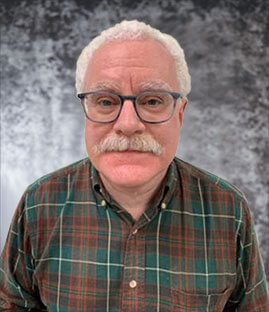Single-point diamond turning is a process of mechanical machining of precision elements equipped with diamond-tipped tool bits. The process used for single-point diamond turned optics may be applied to the manufacturing of high-quality aspheric optical elements from acrylic, metals, crystals, and other materials.
Optical elements created by single-point diamond turning are often used for optical assemblies in video projectors, missile guidance systems, telescopes, lasers, and other systems and devices. Most single-point diamond turning is done with the aid of computer numerical control (CNC) machine tools.
What Is Single-Point Diamond Turning?
Single-point diamond turning is a manufacturing process that’s used to produce low to moderate volumes of accurate and precise optics, typically for research and development or prototyping.
This manufacturing method offers several key advantages over other methods. It offers speed of delivery, reduced tooling costs, high accuracy, and sophisticated surface profiles. As a result, the overall manufacturing lead times are much lower.
Also, because of the high accuracy and precision of turning equipment, the surface finishes and errors in form that may be created in the process are tightly controlled and therefore minimized. Single-point diamond turning can also create complex surface geometries, such as off-axis aspheric and freeform surfaces.
Single-Point Diamond Turning Process
The machine used for diamond turning has several axes: [1]
- X axis, which is the feeding direction
- Y axis, which controls the height of the workpiece
- Z axis, which is the infeed direction
- C axis, which is the turning point
A nozzle is placed next to the diamond tool. A cooling liquid is needed to cool the contact point when cutting metal. With plastic, air is used to avoid damaging the material.
Before cutting, the workpiece must be placed at the center of the spindle to ensure that the rotation axis is the same as the spindle. A gauge is used to detect the centering, then a hammer is used to move the workpiece.
There are 12 screws on the side of the spindle. Adjusting the position of the screws changes the spindle’s balance, ensuring it’s moving smoothly during the cutting process.
The tool position must also be aligned before the cutting can begin. The Y axis is aligned using a microscope. If it’s misaligned, the center will leave materials behind. The X axis must be aligned using an interferometer to ensure the correct shape of the workpiece.
Once the process is complete, and the surface has been fabricated, the workpiece is removed from the spindle to be measured. The surface is measured by both a standard interferometer to determine the surface shape and an interferometric microscope to test the roughness of the surface.
The entire process must be repeated if the optical surface is inaccurate compared to the preferred shape or roughness.
Types of Surfaces
There are several types of surfaces used in single-point diamond turning:
Aspherical Surface:
These surfaces have at least one optical surface of non-constant radius of curvature. These parameters can be set, and the machine can generate the coordinates according to the radius of the diamond tool to allow an aspherical surface to be cut. This is one of the most common surface types for single-point diamond turning.
Lens Array:
This can be fabricated after extensive design. Lens arrays are difficult to cut and may require special tools or a unique cutting procedure.
Freeform:
These optical shapes or surfaces are designed with little to no symmetry. Manufacturing freeform is similar to manufacturing a complex aspherical surface.
Single-Point Diamond Turned Optics at Apollo Optical Systems
Apollo Optical Systems is a leader in optical surface finishes and performance with both plastic and metals using single-point diamond turning. The process can fabricate small quantities of custom optical prototypes before mass production.
We currently have three single-point diamond turning lathes: Two Precitech Optimum 2400 two-axis lathes and one three-axis Precitech Nanoform 200 lathe.
We also offer:
- Custom proprietary diamond tools with radii as small as 1.5 micron
- Optical components from 1 mm to 300 mm in diameter
- Better than average finishes in any material
- A 30-50 A RMS surface finish and < ¼ wave peak-to-valley surface figure
Materials Used for Single-Point Diamond Turning
Apollo Optical Systems uses a wide variety of materials for single-point diamond turning, including:
- Plastics
- Acetal
- Acrylic
- Nylon
- Polypropylene
- Polystyrene
- Zeonex
- Zeonor
- Metals
- Aluminum and aluminum alloys
- Brass
- Copper
- Gold
- Nickel-phosphorus
- Silver
- Tin
- Zinc
Contact Apollo Optical Systems
Apollo Optical Systems combines knowledge and experience with optical design and metrology to ensure a successful final optical element. Contact us today to discuss your custom optics project!
Sources:
[1] https://wp.optics.arizona.edu/optomech/wp-content/uploads/sites/53/2016/12/Tutorial_ChengHN.pdf
About Dale Buralli
Dr. Dale Buralli has served as the Chief Scientist for Apollo Optical Systems since 2003. In this role, Dr. Buralli is responsible for the design and optical modeling of various optical systems. These systems include virtual or augmented reality, ophthalmic and other imaging or illumination systems. Additionally, he provides support for optical tooling of lens molds and prototypes, including the development of custom software for both production and metrology. Dr. Buralli got his Ph.D. in optics from the University of Rochester in 1991. Now he is an Adjunct Professor of Optics at the University of Rochester’s Institute of Optics.

